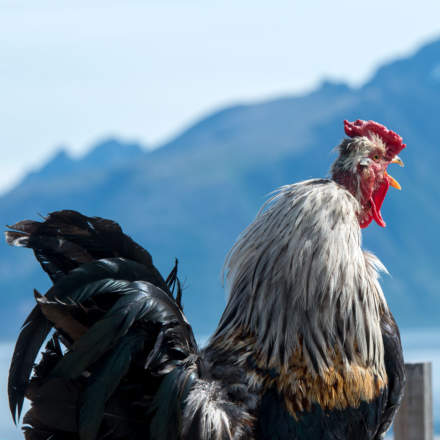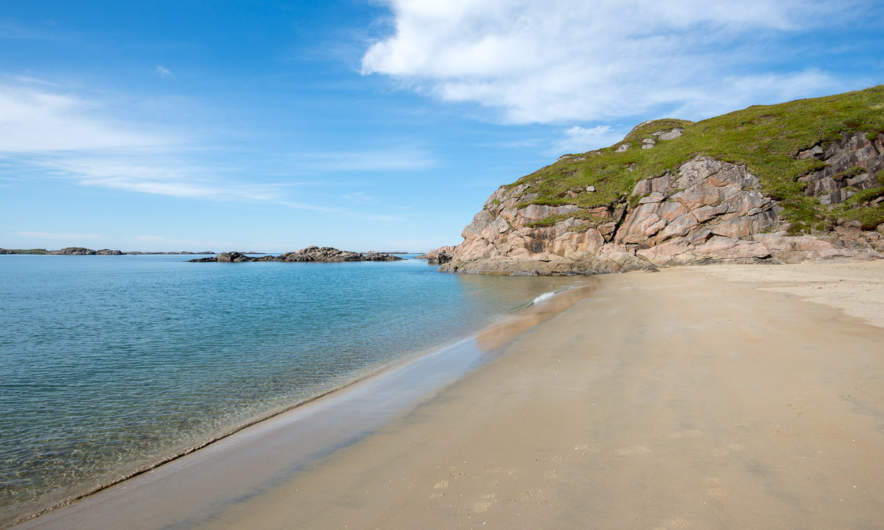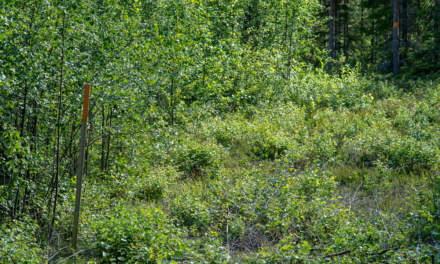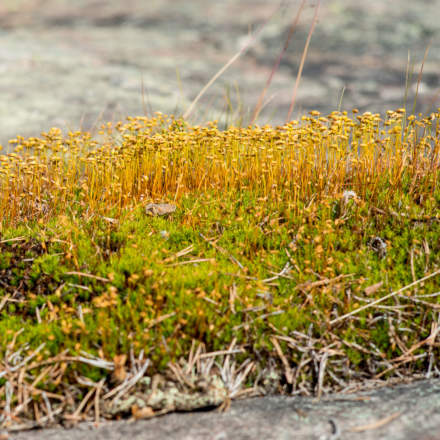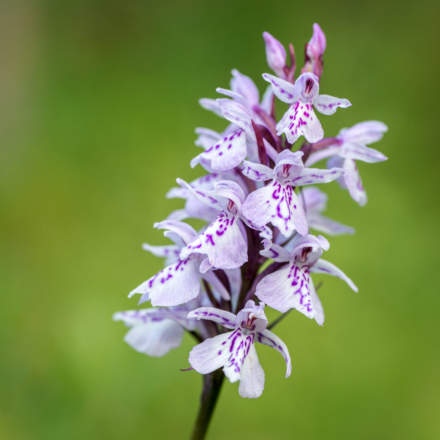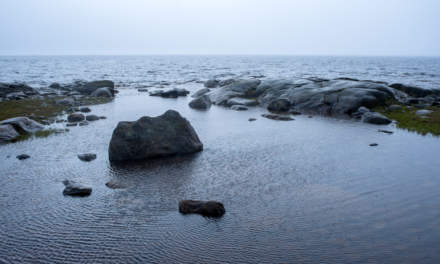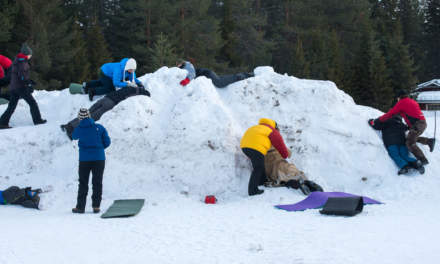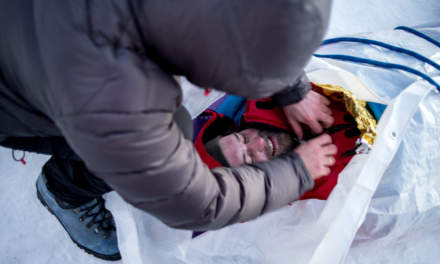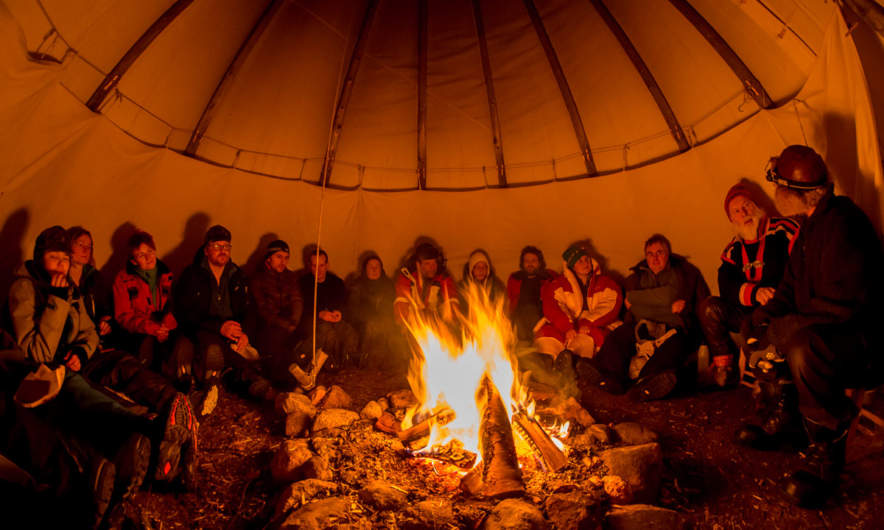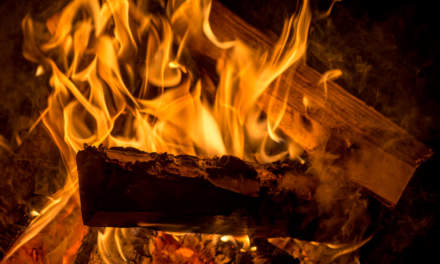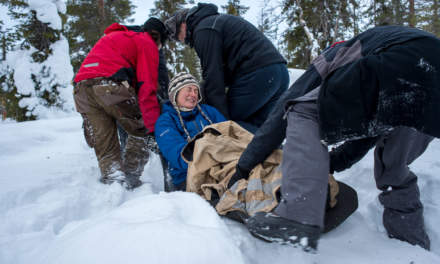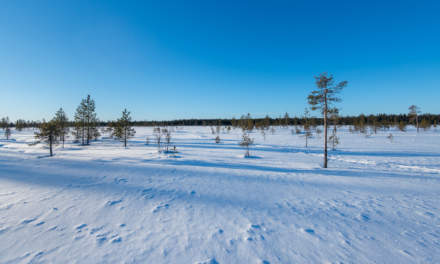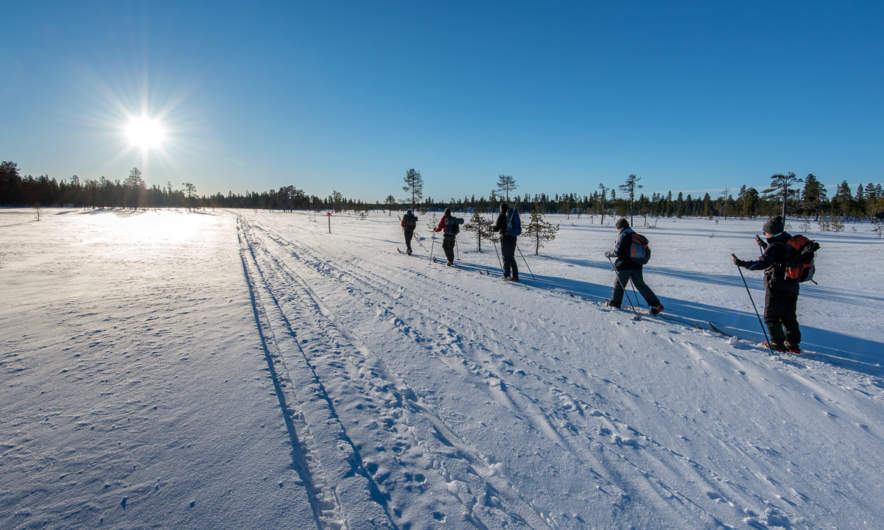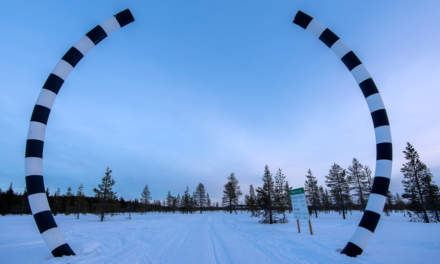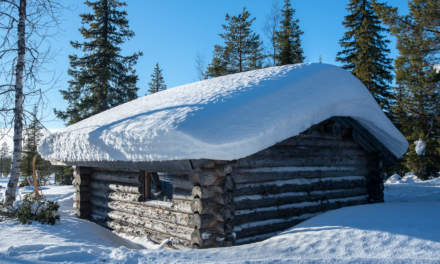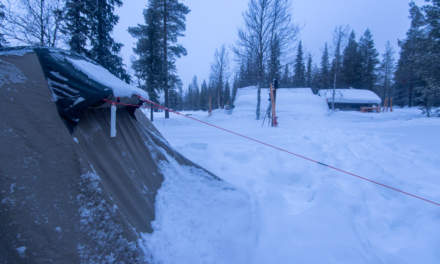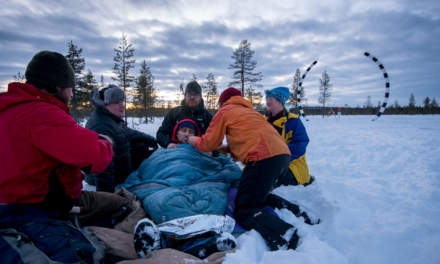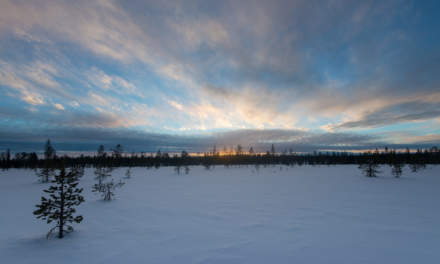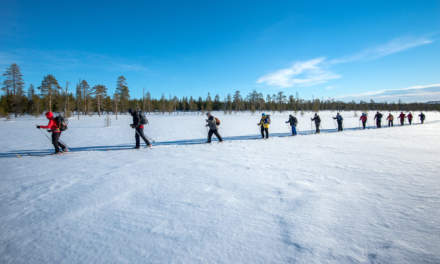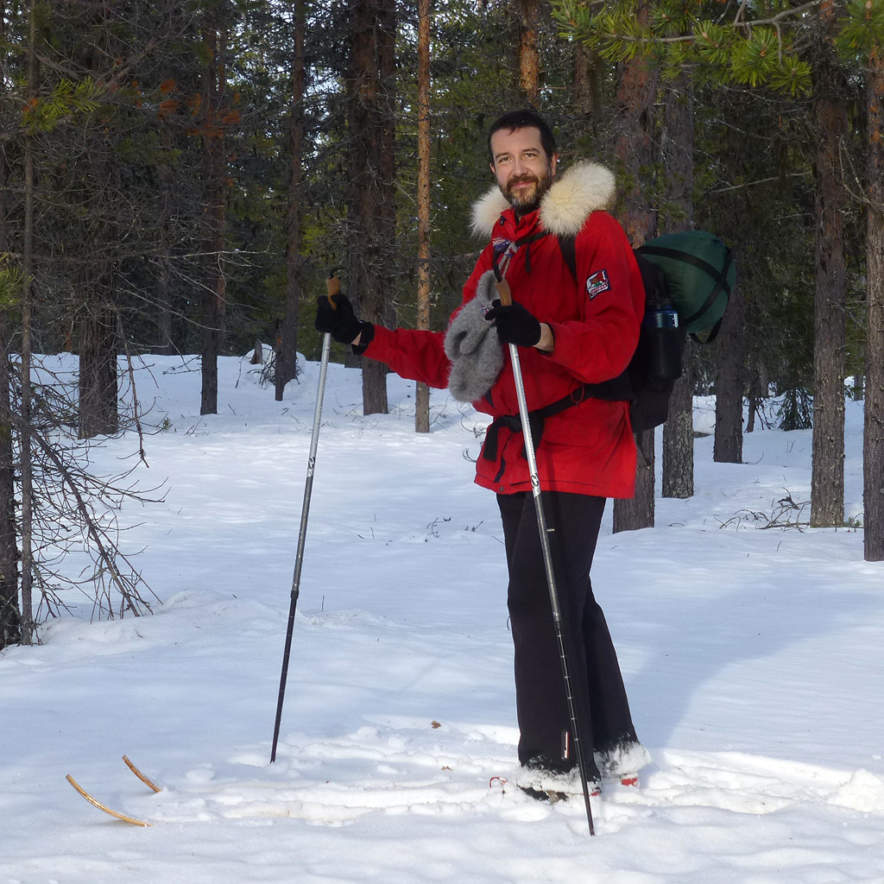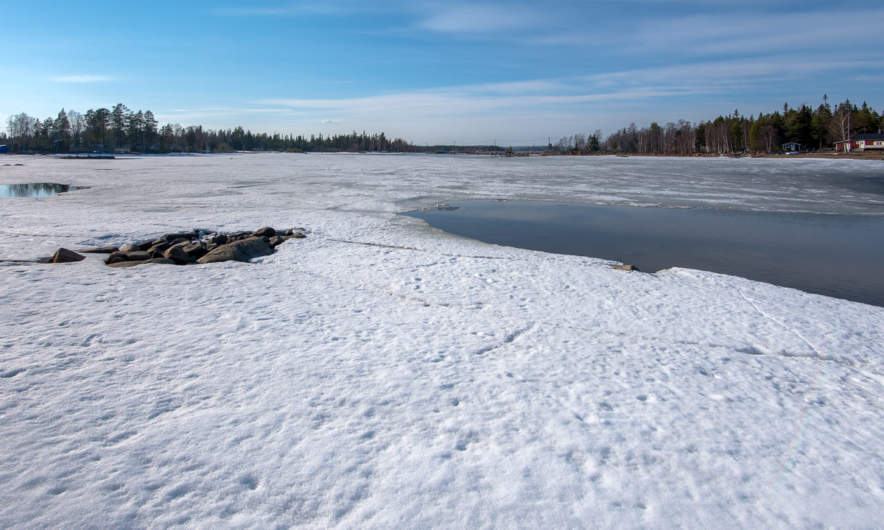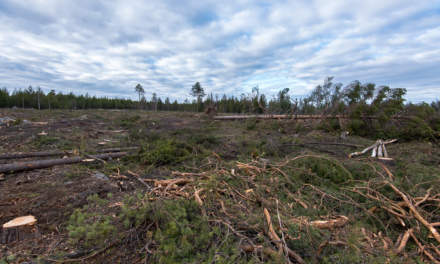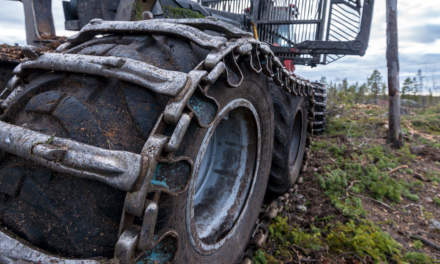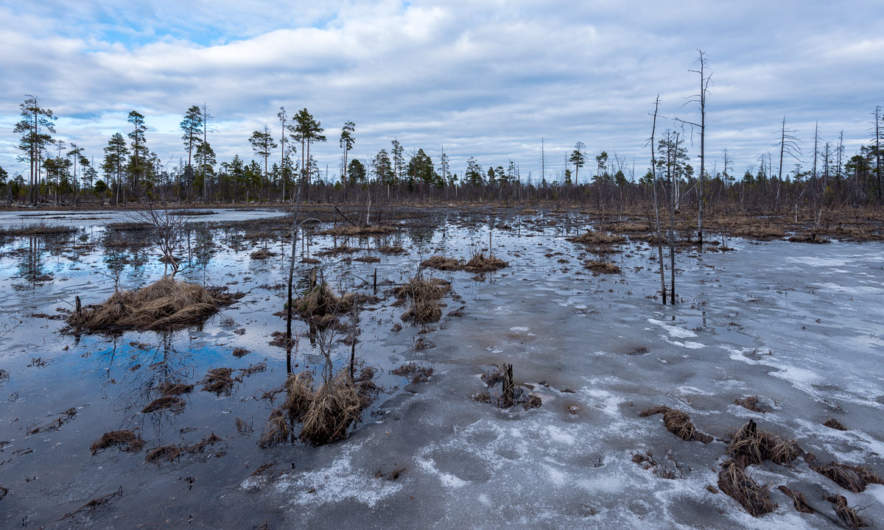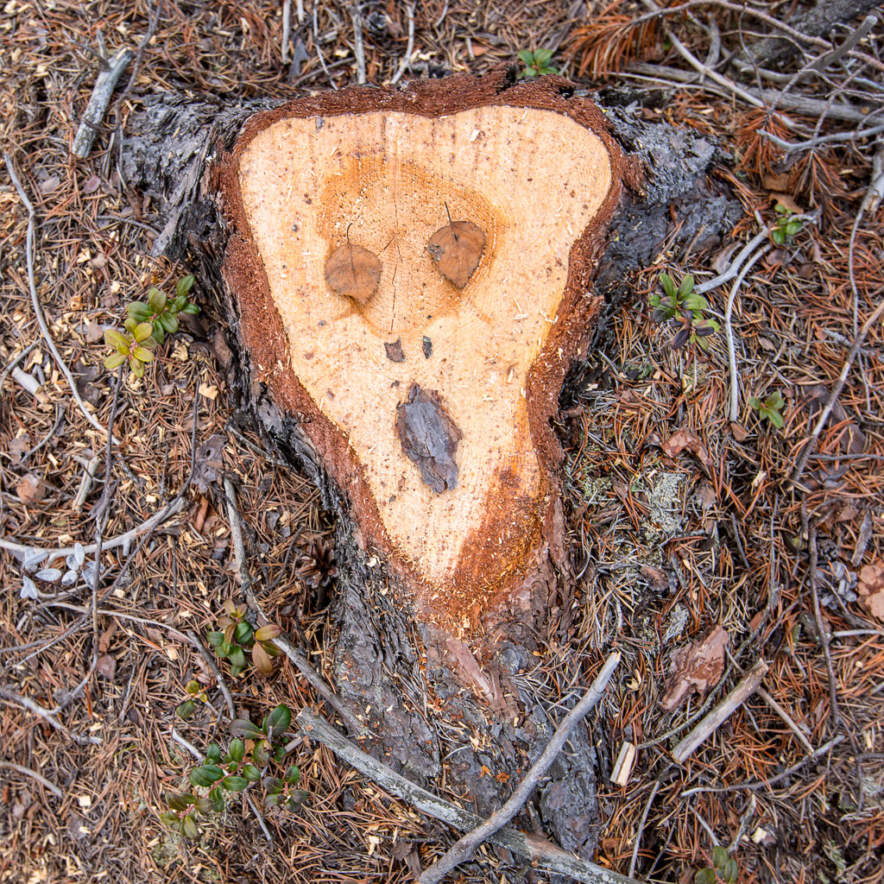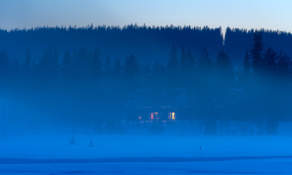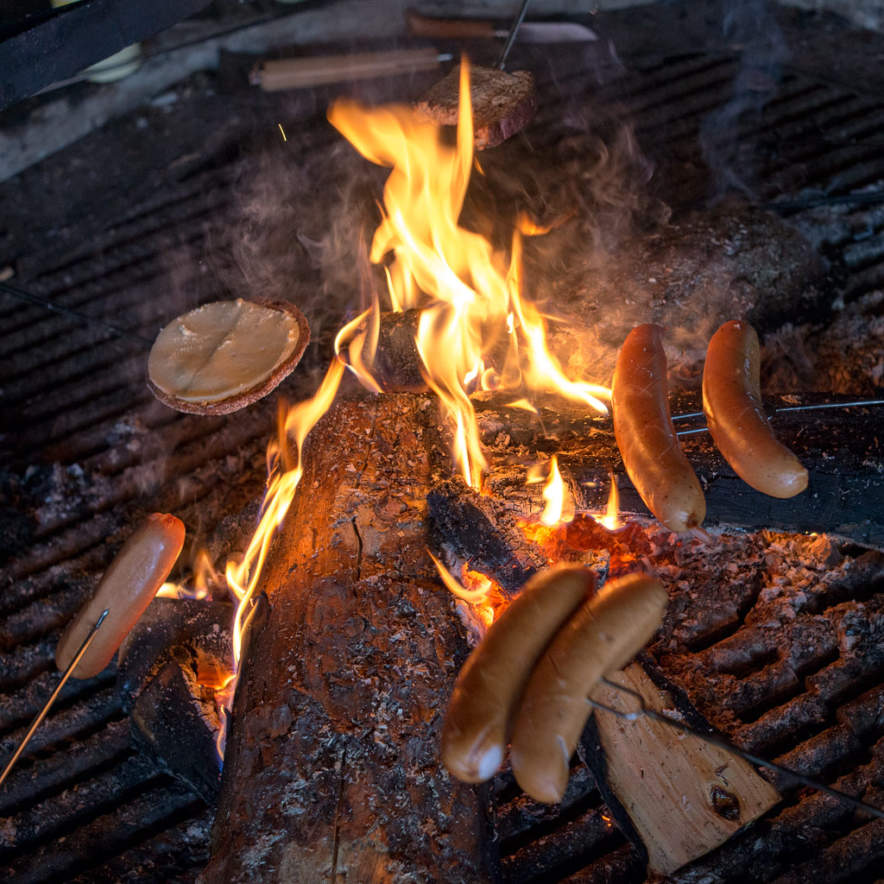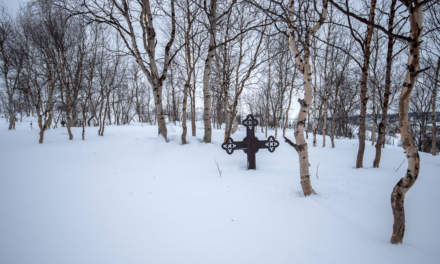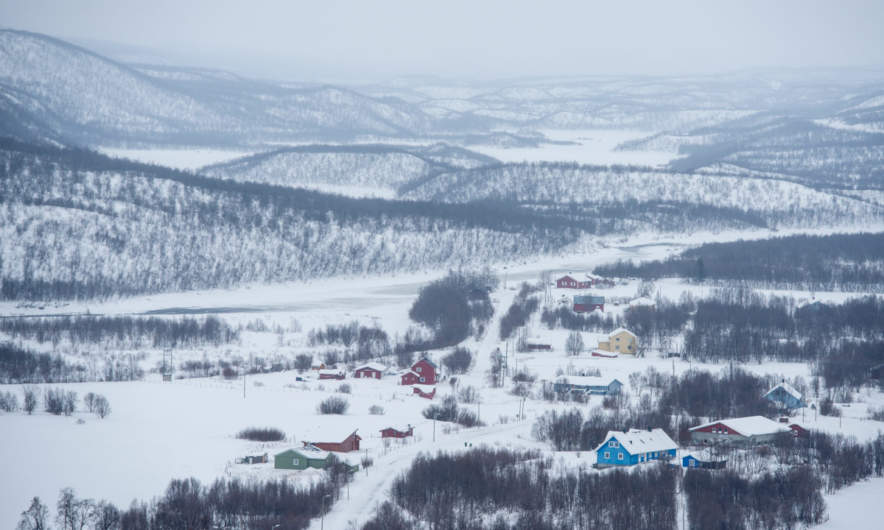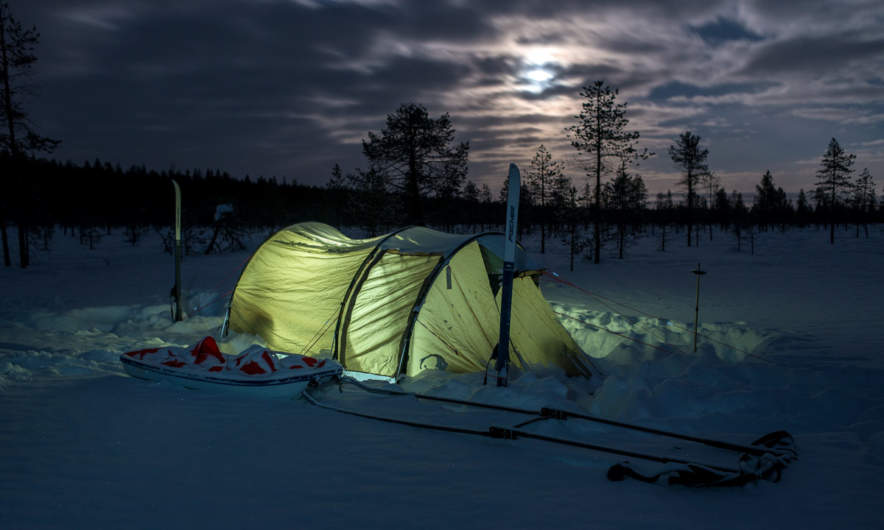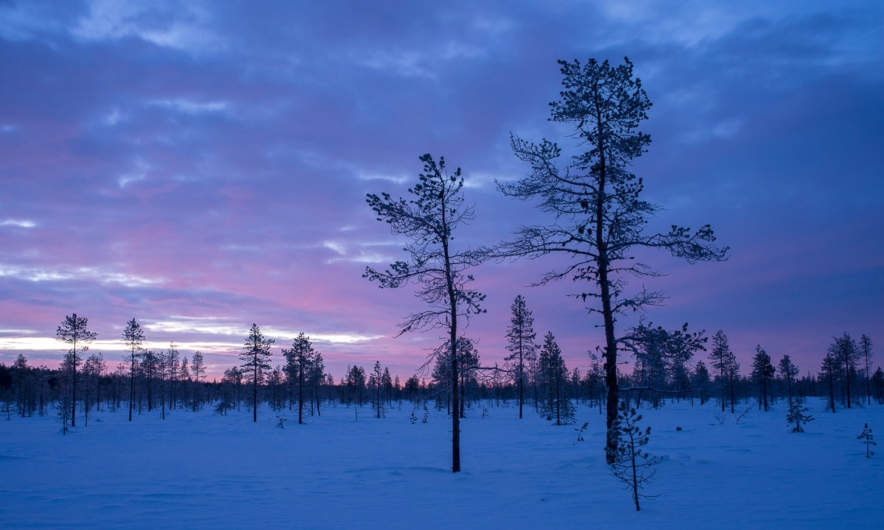Night 27
Last night I decided to tent and just before the village Mäntykero I hit a place. I started to pack my pulka with the most important stuff: Tent, stove, food, camping mat, warm sleeping bag, camera, head lamp and some more. My plan was to go into the snowy landscape some hundred metres to get some distance to the road.
But the way was hard! The snow hardly bore me and every time when I pulled the pulka I went down knee deep into the snow. With skis on! Then I had to climb up just to stand knee deep in powder again two meters later. I guess, it took me almost ten minutes to go 100 meters.
Earlier than planned I stopped and decided to erect the tent. I started to “bulldoze” an area 3 x 4 metres with my skis on to harden the snow and make place for the tent. Normally this snow should stabilise quite soon, but not this sort. It stayed loose for many, many hours. When I tried to put a tent peg (the huge ones for snow) into the ground I could easily push it down to the frozen swampy ground without meeting any resistance. Like pulling a tent peg into a basin of styrofoam pellets! I had to put on much more snow and tramp down again and again to harden the snow. I was so glad that it was only 80cm of snow at this place, not 150cm or even more. And I was glad that we didn’t had any wind at all.
Finally the tent stood – more or less erect. Two skies and poles in four corners and only some pegs – no wind to come. The next thing to do: Cooking, because it can take a long, long time in winter time.
The short version (some outdoor topics following later): It took much time to cook but finally I got my instant noodles with pesto. But I disliked them, they were overcooked and not far away from disgusting. Remember: When you eat warm food outside you will burn your tongue in the first half and eat cold or even half-frozen food in the second half. One of the lesser comfortable things of winter tenting.
Finally I wasn’t hungry and thirsty anymore. It was round half past six and beside of some lights from passing cars on the street it was pitch black.
Um …
Well …
Boring!
I had no book to read (could by a cold pleasure, too), I had no friend to talk with, it was quite dull and just boring. So I decided to sleep half past seven. It went just so-so. I woke up quite often and couldn’t sleep. The iPhone is useless in the cold so I used it diving deep down into my warm sleeping back but only for a minute or two.
I had to go out several times and that was the fun part of the tenting. I could see how it started snowing (only two cm), I could see the moon illuming the snowy flats, I could see the temperature drop down to -22 °C (almost record on this quite warm winter journey!) and finally after many one- or two-hour naps I could see the lilac clouds heralding the sun rise.
Again it took time to cook my “muesli” and some water for tea but because we hadn’t any wind at all I could cook outside – luxury! Eating was fast as usual before food starts to get cold or even freeze.
Then I packed my stuff, unpacked the tent, put it all into or onto the pulka and went back to the car. As I hoped, I could go in my old tracks without sinking to deep. Therefore I was back in the car quite soon. I tried to brush away all snow before loading my equipment into the car. Three hours later after standing up I started the motor and continued my journey to Pajala.
Conclusion:
I love winter tenting when I’m on a tour over several days, but I consider it time consuming and uncomfortable when I’m travelling by car and only use it as a cheap sleeping opportunity. But most of all do I prefer to do it with a friend, because that’s much more fun and even the time for erecting the tent, cooking and so one reduces dramatically.
Plan for winter 2015/2016: As many ski tours with old and new friends as possible!
Outdoor details:
Some stories, thoughts and tipps.
I asked myself, how should I tent, when there is much more snow, lets say two metres. Digging down? Fixing the tent to some trees. And what do you do, if you have deep and loose snow and storm. I don’t know.
I’m using a multifuel stove and use petrol as fuel. I have to admit, that I dislike my stove, it acts like a diva and it’s not so easy to find the right combination of pressure, opening and closing valves and preheating. And it always smells a bit petrol. Yesterday Lars from Vildmarksmekka gave me the tipp to use a common Trangria in combination with “Tenol”, a mixture of methyl alcohol and ethanol. He has used it without any problems with temperatures down to -37 °C. I have to check out this.
Lars tipped me off that I could use much longer skis to avoid sinking into the snow. Much longer means at least three meters! I think that’s great for open terrain, but I don’t want to get stuck in a birch thicket with them.
Note to myself: Buy better food! Food preparation takes a long time outdoors and it’s disappointing, if it doesn’t taste well. Avoid “Snabb makkaroni”.
I have a extremely warm sleeping bag and an Exped Down Mat as a camping mat. The sleeping bag was always too warm for -15 °C, but fine and cozy when temperatures dropped below -20 °C. First I thought, that the down mat was broken because It lost all air after some minutes. Fortunately it was only a valve, that I didn’t close properly.
Next time I would avoid making photos in the tent. Too much moisture so that the lens got fogged and the moisture froze on the lens.
I didn’t want to leave my laptop in the cold car and put it down in the sleeping back while sleeping. Not so comfortable, but it worked. Anyway should MacBook-Pro-computers cope coldness down to -25 °C without any problems, at least as long they’re off.
Clothes can get wet and all things that got wet will freeze. I had a hard time to use my gaiters the next morning. Putting on the ski trousers was like putting on cold planks and the gloves were frozen as well. I have to check for solutions …
I had the luxury that I used the tent only for one night. I could dry both tent and sleeping bag the day after. Otherwise I would use a vapour barrier liner, a plastic bag you wear inside of the sleeping bag to prevent moisture going into the down filling and freeze. Anyway you will have ice round the hood where you will breeze into in the night.
Plans: Learn to erect a tent in deep snow. Learn to erect a tent in storm. Check the Trangia stove with tenol. Check how I can prevent clothes from freezing or how I can minimise the effect.











